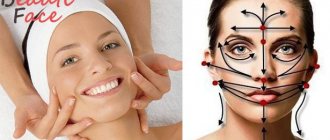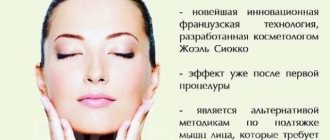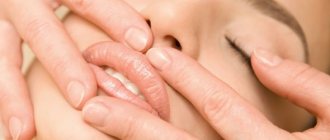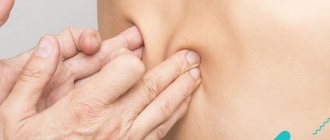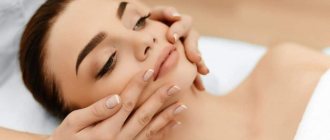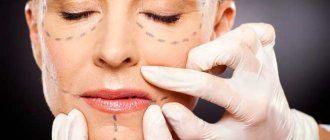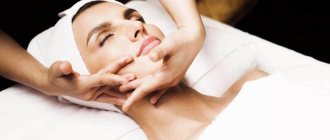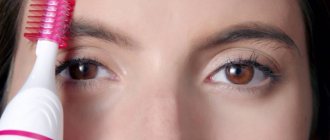The facial massage technique has been around for a long time, but in recent years it has become a real beauty trend. Many bloggers and stars started talking about it, and specialized salons and studios for this type of massage began to appear all over the world. Many women began to experiment with the procedure at home: some are trying to master the classical technique and face gymnastics, others use a Guasha scraper and special rollers every day. There are really a lot of options, and the effect often depends not on the technique used, but on the frequency of sessions, the correctness of the procedure and the individual characteristics of the skin.
So what are the main advantages of facial massage? Is it true that such a procedure can slow down the aging process and replace a visit to a cosmetologist? Let's find out in our article.
Types of facial massage
Photo: Yandex.Pictures
The procedure involves a preventive and therapeutic effect on the skin and muscles of the face. Due to this, it is possible to significantly improve the condition of the epidermis, launch rejuvenation processes and reduce facial swelling.
The main advantage of the technique is non-traumatic work with the face, due to which the massage evokes only pleasant emotions and, from a psychological point of view, is perceived much better than various peelings, cleansing and injection procedures.
There are many types of face massage, we will tell you about the most popular options:
- Classical. It is based on various stroking and rubbing. This version of the procedure will be useful for aging and dull skin. The manipulation is carried out every other day; 2–3 courses of 15–20 procedures can be performed per year. Great for eliminating facial wrinkles and maintaining youthful skin. Performed with butter or rich cream.
- Pinch massage (Jacquet massage) . A technique combining stroking, kneading, deep pinching and vibration. Very often, this version of the procedure is used to eliminate stagnant spots after acne and comedones, as well as to treat scars and seborrhea. In fact, the procedure can replace a full facial cleansing, however, to achieve a positive result, the manipulation should only be performed by an experienced professional. The average course of treatment is 20 procedures, 2–3 times a week.
- Plastic. A manipulation that uses rhythmic and pressing movements along the massage lines of the face. Suitable for combating tissue ptosis and decreased tone. Plastic massage is quite good for helping with swelling and puffiness. 15-20 procedures are recommended, 2-3 times a week.
- Hygienic (cosmetic) . A technique whose main technique is stroking. It is often performed by influencing biologically active points. This technique is indicated for dry and aging skin, a decrease in its tone and elasticity. The course of hygienic facial massage is 20 sessions 1–2 times a week.
- Japanese (Asahi) . This massage is suitable for eliminating facial wrinkles, puffiness and dull skin color. A technique is used to influence certain biological points. On average, 10–14 sessions are required every day.
- Sculptural (modelling). To increase skin elasticity, eliminate a double chin and fuzzy oval face, as well as combat dark circles under the eyes, a sculptural technique is used. It is performed along certain lines, outlined taking into account the structural features of the face. The work is carried out not only with muscles, but also with lymphatic and blood vessels. The procedure is carried out in sessions of 45–60 minutes. A course of 8–12 procedures is required.
- Myostimulating. This type of massage is suitable for decreased skin tone, rosacea, hyperpigmentation, expression lines and swelling. Most often, the procedure is prescribed to people over 35 years of age. During the session, vigorous movements are used, but without moving the skin. Due to this, the work of the sebaceous glands is normalized, blood circulation is activated and the muscle frame is strengthened. It will take about 15–20 procedures 2–3 times a week.
- Honey. For severe wrinkles and dry skin, honey massage is often used. For it, honey is applied to the skin, and then light tapping movements are performed with the pads of the fingers. To achieve a positive effect, a course of 10–15 sessions 2–3 times a week will be required.
- Lymphatic drainage. A method that will eliminate sagging skin, puffiness, facial wrinkles and dark circles under the eyes. The main feature is a gentle effect on the lymphatic vessels. Conducted in a course of 10–12 sessions 3 times a week. The duration of the procedure is on average 40 minutes.
- Guasha (using a scraper or roller). A simple procedure for daily skin care. This massage is often performed at home. Helps improve complexion, eliminate pigmentation and sagging skin, reduce swelling and severity of wrinkles. Performed for 5–10 minutes using a nourishing cream or other care product. Can be carried out regularly throughout the year.
Photo: Google.Images
Number of procedures and frequency
Many people are interested in the question of how often you can do a facial massage. If you use the classic technique, Guasha massage or roller, then you can perform the procedure at least every day. However, it is important not to overdo it: 5–7 minutes is enough, during the session you should avoid excessive pressure on the skin, and you should not use peeling products immediately after the massage.
Carrying out the procedure less frequently is also acceptable; the effect will be noticeable even if you perform 2-3 procedures per week. But it is important to remember that regularity is important, so try not to skip pre-planned manipulations. Patience and self-organization will allow you to see positive results within a few weeks.
On average, massage will need to be done in courses from 8 to 20 sessions. To maintain the effect between courses, it is recommended to use special care and apply all products along massage lines.
Continued after advertisement
Find your massage therapist on MasterMassage.Ru!
Go to website
Dr. Spiller – Fresh and Fruit Moisturizing Mask
This is a gel mask that contains pineapple and papaya extracts and has a cleansing, moisturizing and brightening effect on the skin.
The main advantage of this mask is that it is perfect for young, oily skin.
Among the disadvantages of this mask, I can note a drawback that is common to almost all gel products. It does not provide prolonged gliding, and during the massage it is necessary to periodically wet your fingers with water to resume gliding.
But this is the case when you need to choose the lesser of two evils - for those for whom cream is not suitable for massage, it is better to opt for gel.
And if you need a budget option, this tool most likely will not suit you. But you can try another gel mask for oily skin. The main thing is that the gel has a fairly dense jelly-like consistency and is not absorbed very quickly.
Will do
People with young, oily skin prone to breakouts and clogged pores. For those for whom almost any massage cream contributes to the appearance of acne.
Won't fit
For those with young and mature skin that is not characterized by increased sebum production, there are many other interesting products for such skin.
Facial massage oil
Photo: pexels.com
When performing the procedure, it is better to use oil or nourishing cream. The most important thing when choosing products is to focus on your skin type. There are several options that will suit almost everyone: for example, peach seed oil, rice bran or shea butter. These products are quite versatile and at the same time hypoallergenic; they do not cause irritation or redness.
- Avocado, jojoba, macadamia, rosehip and argan oils are good for dry skin
- For oily skin, it is better to use hazelnut or rice bran oil.
- for normal skin .
- For problem skin prone to inflammation, it is better to choose rosehip, amaranth, and pomegranate seed oil.
To carry out the procedure, only 1-2 drops of the product are used. Apply the compositions to previously cleansed skin.
Some people prefer to use batters, that is, solid oils. For example, it can be shea butter (karite), cocoa, mango, babassu. However, even when melted, they can be very dense, so it is best to mix them with liquid oils.
There is one controversial issue - the comedogenicity of the compositions. There are different classifications of oils based on their comedogenicity, that is, their ability to clog pores and cause inflammation and comedones. However, it is worth understanding that the skin reaction is largely individual. There are cases where products with low comedogenicity caused inflammation, and highly comedogenic oil, on the contrary, helped eliminate a number of cosmetic problems. For example, coconut oil is considered extremely comedogenic, but many people use it on an ongoing basis.
When using oil for facial massage, apply it to slightly damp skin - this will avoid increased oiliness after the procedure. And remember that oil will not replace basic care - after the procedure, be sure to cleanse your skin and apply your usual products.
Useful life hack: after the procedure, wipe your face with an ice cube with chamomile to eliminate inflammation and acne. It is not difficult to prepare such a treatment. You need to brew dry chamomile, as written on the package. Cool the resulting solution and strain. Then pour the broth into ice cube trays and place in the freezer.
Facial massage scheme
Photo: Google.Images
You need to start with the fact that self-massage of the face requires mandatory preparation. It consists of cleansing and moisturizing the skin. You should start by removing makeup and washing with cleansers. Next you need to apply lotion or refreshing tonic. After this, use the selected oil (or cream) and proceed directly to the massage.
Now let's look at the procedure using the example of classical technology. You will need to repeat the following scheme:
- Step 1. Run your knuckles from your nose to your cheekbones. Movements should exactly follow the line around the eyes. Repeat 15–25 times.
- Step 2. In the same way, draw a line from the tip of the eye to the temples. The eyebrow should rise slightly. Repeat 15–25 times.
- Step 3. Gently place your fist at the point between your eyebrows. Perform rotational movements counterclockwise for 30 seconds.
- Step 4. Using both hands, move from the center of the forehead to the temples. Movements should follow the hairline (hands still clenched into fists). Repeat 25 times.
- Step 5. Transfer the movements from the first point to the nasolabial folds. From the wings of the nose to the ears you need to draw a curved line 25 times.
- Step 6. Fist - on the chin. You need to rotate it counterclockwise for 30 seconds.
- Step 7. Run your knuckles from the corners of your mouth to your ears 25 times.
- Step 8. Using fists, we take turns moving from the chin along the neck to the décolleté area.
- Step 9. Rub your palms over your face, as if washing your face.
During the massage, your hands should slide over the skin. If this does not happen, you need to apply more cream or oil.
If the procedure is carried out correctly, then immediately after the session you will notice a slight reddening of the face. This redness will disappear in a few minutes, after which the skin will become more toned and elastic.
Materials from the YouTube channel “ProBeautykz” were used to prepare this article.
What is better - facial massage at home or in the salon?
The procedure involves many different techniques and techniques, some of which can only be used in a salon, others are great for home use.
If we are talking about daily care and eliminating minor cosmetic imperfections, then it is permissible to perform facial massage yourself. To do this, you only need 5-10 minutes a day - in the morning or evening.
However, for a number of techniques, for example, lymphatic drainage massage, the help of an experienced massage therapist will be required. But the result of the course will be more pronounced: with the help of professional help, it will be possible to correct serious cosmetic problems and noticeable age-related changes.
Indications for the procedure
Facial massage is recommended for the following indications:
- Acne, enlarged pores.
- Rashes in the form of black dots.
- Expression and age wrinkles.
- Initial tissue ptosis.
- Decreased skin tone and elasticity.
- Having a double chin.
- Skin folds in the area of the upper eyelids and neck.
- Dull complexion.
- Dark circles under the eyes.
- Pronounced swelling, fuzzy oval.
- Signs of skin dehydration.
- Hyperpigmentation and redness.
- Recovery after surgical procedures.
Contraindications
The contraindications include the following:
- The presence of allergic and infectious rashes on the skin (for example, eczema, herpes, etc.).
- Numerous moles and papillomas in the affected area.
- Various violations of the integrity of the skin (abrasions, cuts, scratches).
- Fragility of superficial vessels.
- Recent chemical peels (less than 2 weeks after procedure).
- Oncological diseases.
- Neuritis of the facial nerves.
- Hypertonic disease.
- Blood clotting disorders.
- Cardiovascular pathologies.
- Acute sinusitis and sinusitis.
- Exacerbation of chronic diseases.
Before facial massage, it is recommended to consult a specialist to ensure that such a procedure is possible.
Continued after advertisement
Find your massage therapist on MasterMassage.Ru!
Go to website
Revitonics
Initially, I really liked revitonics, but later other girls began to appear who adopted the techniques and began to pass them off as their own. Then all these trials and showdowns began. In general, the impression was spoiled.
But this technique is still extremely useful. In Revitonics, I like the approach to the body as a whole.
You won't have a beautiful face without good posture. Posture is everything to us. Put your head and neck in place! This will improve blood circulation, the head and face will receive enough oxygen, which will have a very beneficial effect on the overall condition of the skin.
Facial exercises are primarily aimed at relaxing the muscles of the head, neck and face, which helps smooth out wrinkles.
I will show my favorite techniques from Revitonics and similar systems. First of all, I like exercises for the neck, shoulders and back.
My favorite back exercise is lying on a bolster. I will definitely write about this separately, as it is important.
An excellent exercise for the neck - relieves tension, lengthens the neck and removes the withers over time.
For the face, I really love these techniques:
The forehead instantly smoothes out, the eyes open and the eyebrows become 1-2 centimeters higher. The effect is cool.
